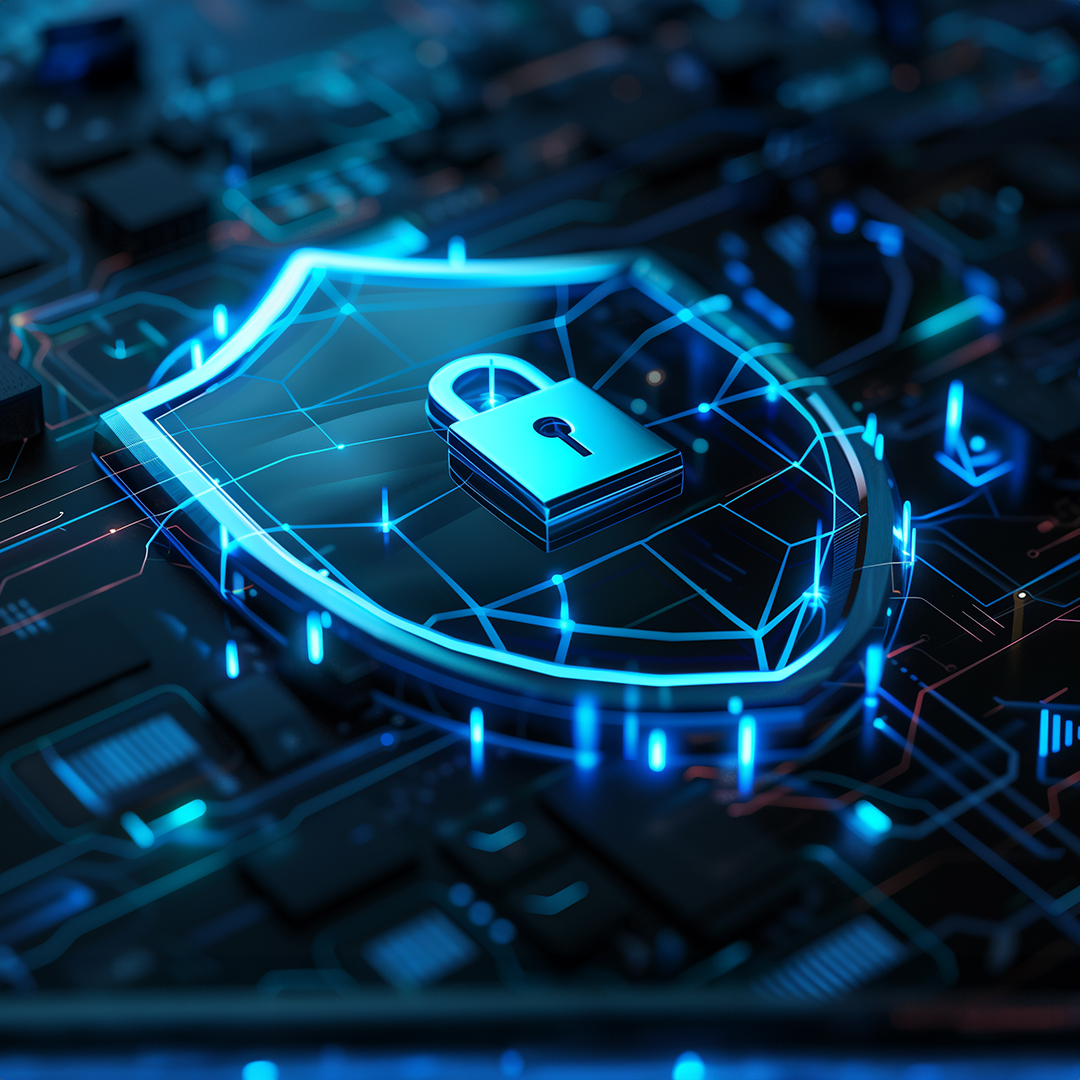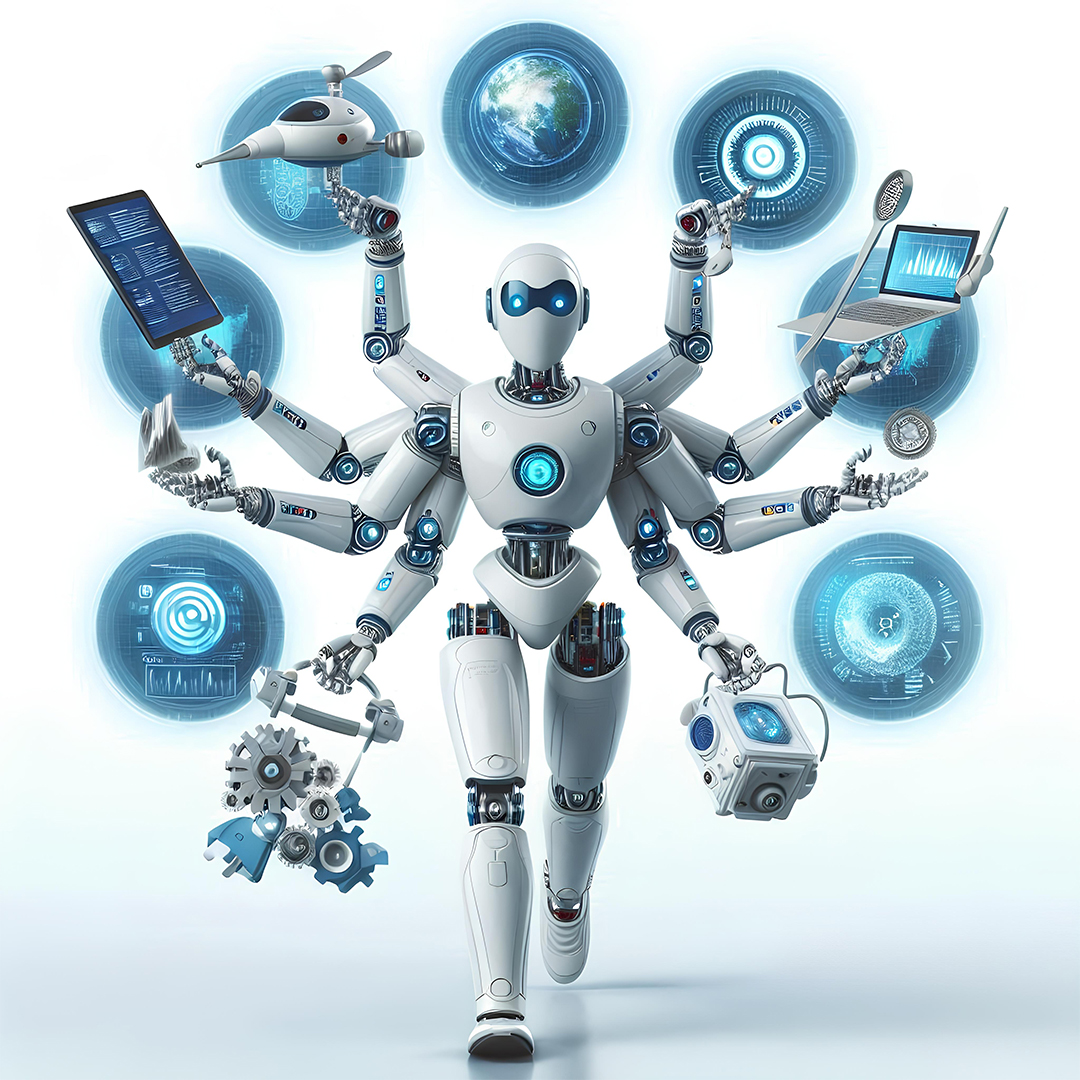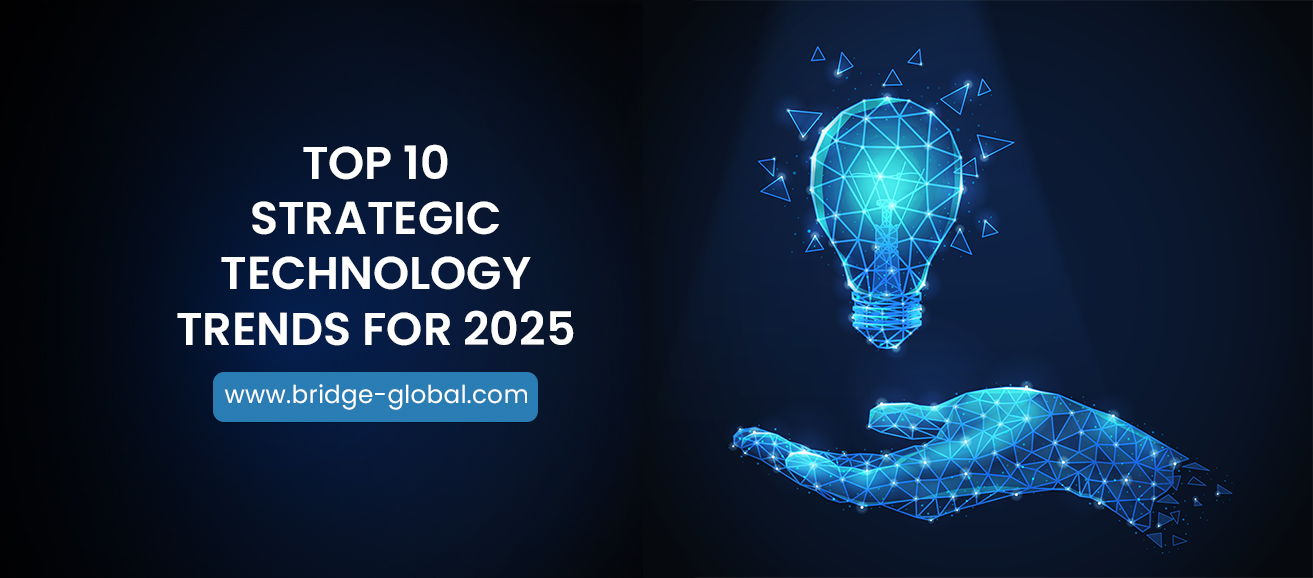The Future of Tech: Unpacking the Top 10 Strategic Technology Trends for 2025
As technology evolves at a breakneck pace, developments like AI, postquantum cryptography, hybrid cloud computing, and more will have an impact on numerous industries. Emerging technologies such as autonomous AI, energy-efficient computing, and more aim to reshape the business landscape, bringing both possibilities and challenges to companies all around the world. Gartner's Top 10 Strategic Technology Trends for 2025 emphasize the disruptive innovations that will drive transformation in the coming years.
These innovations, which range from breakthrough AI trends to groundbreaking healthcare and technology trends indicate a fundamental shift in how organizations operate. To remain competitive, companies must quickly modify their strategies, embracing the latest tech trends and innovations while navigating new challenges in technology and security.
Let’s take a closer look at each of the top 10 technological trends that are poised to lead the charge in the coming years.
Top 10 Strategic Technology Trends for 2025
Agentic AI
Agentic AI is a group of artificial intelligence systems that have been designed to function as autonomous agents that can interact with their surroundings, complete tasks, and make decisions without the need for direct human intervention. This agent-based AI prioritizes goal-oriented behavior and adaptive decision-making, in contrast to traditional AI models that adhere to preset rules or Generative AI, which concentrates on generating new content. These autonomous AI systems use sophisticated algorithms and sensory inputs to perform operations in real-time, consistently learning and improving their performance through ongoing feedback.
AI Governance Platforms
AI governance platforms are technological solutions that help guarantee AI models and systems are dependable, transparent, fair, accountable, and adhere to safety and ethical norms, all of which can contribute to greater trust in them. Key applications for AI governance platforms include analyzing possible risks and damages, ensuring suitable controls are implemented across the AI model life cycle, and aligning governance standards over time. AI governance systems are expected to minimize AI-related ethical concerns in organizations by 40% by 2028.
Disinformation Security
Disinformation security is a rapidly developing field of technology that systematically establishes trust and intends to create methodological tools for maintaining integrity, assessing authenticity, preventing impersonation, and tracking the spread of false information. The rise of generative AI raises the possibility of this technology being utilized for the generation of synthetic media. Disinformation security is a tool aimed at protecting businesses and individuals from misleading or incorrect information being spread online.
Post-Quantum Cryptography
The emergence of quantum computing means that present encryption technologies may soon become obsolete. Post-quantum cryptography protects data against quantum computing decryption risks. This means that sensitive data will be protected from being compromised by future quantum computers. IT leaders will soon need to replace all encryption with a post-quantum algorithm that cannot be broken by classical or quantum computing.

Ambient Invisible Intelligence
Ambient invisible intelligence involves the seamless incorporation of sensing technology into everyday scenarios. It will be powered by low-cost smart tags and sensors that provide large-scale tracking, allowing for greater integration of sensing and intelligence into every day activities by 2027. From supply chain management to inventory tracking, these tags will make invisible operations visible, providing organizations with previously inaccessible data.
Energy-Efficient Computing
As AI models become more energy-intensive, the demand for energy-efficient computing grows. AI training, optimization, and media rendering, among other applications, may be major contributors to many businesses' carbon footprints. By the late 2020s, it is being predicted that businesses will switch to greener cloud providers, optimize algorithms for energy use, and explore advanced technologies such as neuromorphic and novel accelerators, which can help with operations such as AI and optimization while drastically lowering their carbon footprint.
Hybrid Computing
Organizations are projected to use a hybrid computing approach, combining compute, storage, and network mechanisms to address computational issues in order to develop highly efficient and innovative environments that perform better than conventional ones. In the coming years, businesses will use hybrid computing to perform various tasks, integrating CPUs, GPUs, quantum computing, edge computing, and other technologies. This combination of technologies will work together effortlessly, unlocking new possibilities and efficiencies.
Spatial Computing
Spatial computing is the digital augmentation of the physical world using technologies such as augmented reality (AR) and virtual reality (VR). This technology is poised to enable deeper levels of interaction between both the real and virtual worlds, resulting in immersive 3D experiences. This technology is already gaining traction in the gaming sector and has the potential to transform industries such as manufacturing, healthcare, and retail by introducing a new layer of intelligence.

Polyfunctional Robots
Polyfunctional robots, which can perform multiple tasks, will soon take the place of single-task robots. In addition to bringing improved efficiency, these multi-use machines are designed to coexist with humans, creating new potential for more human-machine interaction. By 2030, people might interact closely with polyfunctional robots capable of performing a variety of tasks. These multitasking robots will become an essential part of daily life, whether they are assisting with household chores, doing complex industrial tasks, or providing personalized healthcare.
Neurological Enhancements
Neurological enhancements refer to the use of technology to read and decipher brain activity in order to improve cognitive task execution. This is accomplished through the use of either unidirectional or bidirectional brain-machine interfaces (BBMIs). These innovations, which range from wearables that improve brain performance to brain-computer interfaces that restore lost senses, will transform healthcare as we know it. These types of technologies also offer enormous potential in three areas: human upskilling, next-generation marketing, and performance.
The Wrap
Gartner's 2025 top ten strategic technology trends offers a peek into the influence rapid technological advancements have on businesses while encouraging IT leaders to take responsible, ethical actions. Each featured technology has the potential to accelerate breakthroughs in AI and computing. These developments are projected to result in major disruption and opportunities for CIOs and other IT leaders over the next ten years.
You can make sure that your company leverages all the latest tech, AI and IoT trends by partnering with an experienced and reliable software development company!



